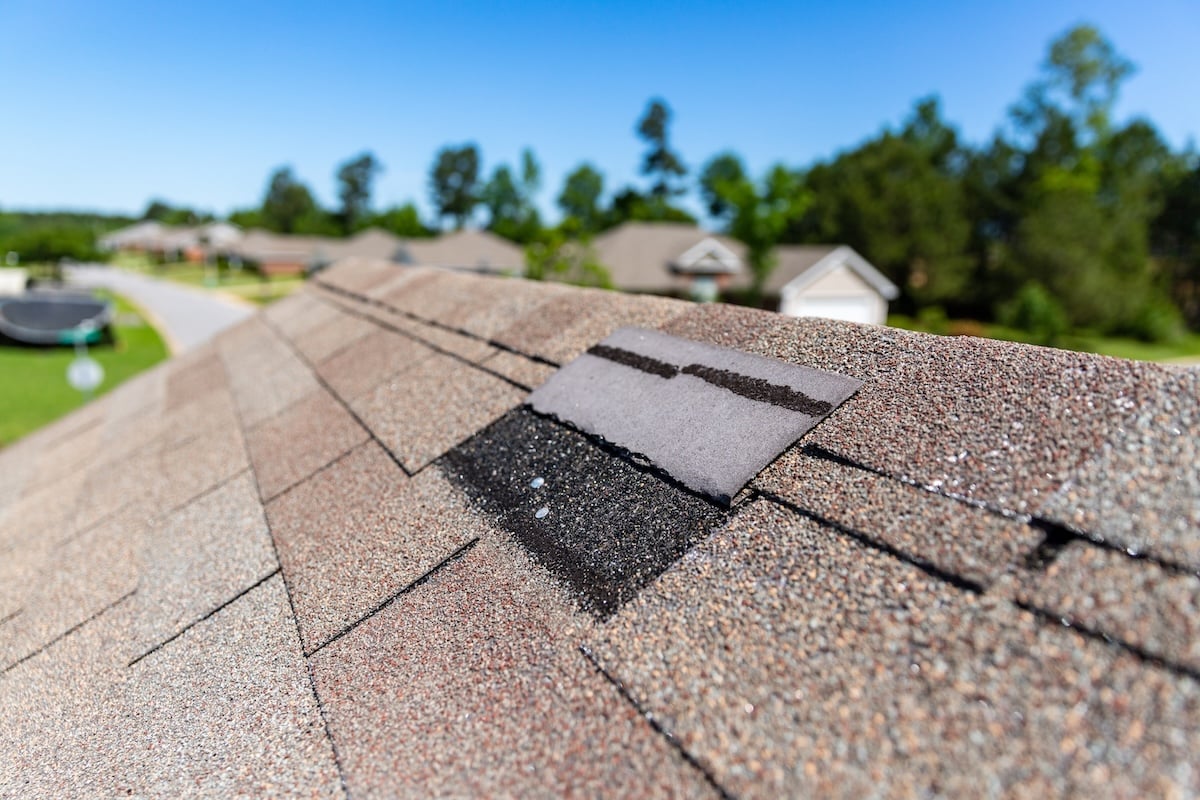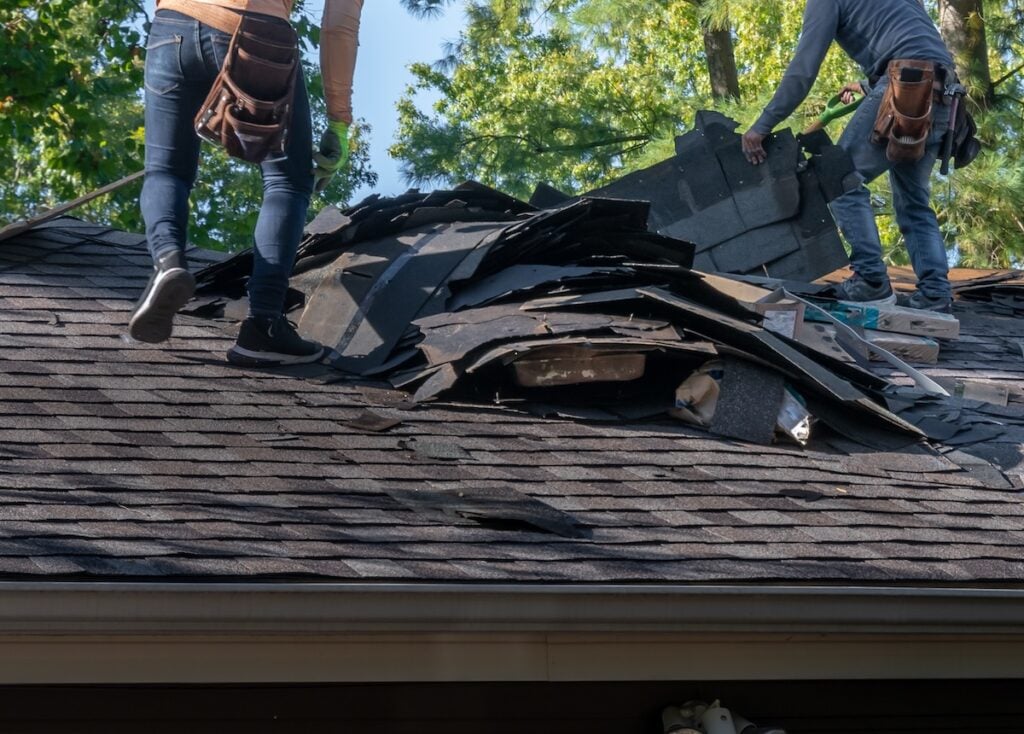
How To File a Roof Insurance Claim (Explained In 6 Easy Steps)
 6/24/2025
6/24/2025 6 Min Read
6 Min ReadFiling a roof insurance claim can feel overwhelming if you’ve never done it before. Whether your roof has suffered damage from a storm, hail, falling branches, or high winds, knowing what steps to take can help you navigate the process more smoothly and protect your property.
Important documentation: Accurate photos and notes can help support your claim.
Timely action: Acting quickly may be necessary to prevent further damage.
Policy awareness: Understanding your coverage and exclusions is key before starting repairs.
This general guide outlines six common steps homeowners may follow when filing a roof insurance claim. Every situation is different, and policyholders should always refer to their specific insurance agreement and speak with their provider for guidance.
⛈️ When You Might Need To File a Roof Insurance Claim

Storm or Hail Damage
Roof damage from hail, wind, or falling debris is a frequent reason for insurance claims. These weather events can cause shingle loss, punctures, flashing damage, or leaks.
Visible signs: Missing shingles, dented metal, or torn flashing.
Potential risk: Exposed roof decking or insulation may lead to water damage.
Tree or Branch Impact
Large trees near your home can become a risk during heavy storms. Falling limbs or trees can damage both the roof surface and underlying structure.
Common issues: Structural damage, punctures, and water intrusion.
Immediate safety: May require temporary tarping or relocation of residents.
Wind Uplift or Debris Damage
Even without hail, strong wind events can peel up shingles, shift flashing, or launch debris across your roof.
Often missed: Damage may be hidden behind lifted shingles or under ridge caps.
Inspection tip: Some damage is only visible from above.
📋 What Insurance Might Cover
Depends on Your Policy
Each homeowner’s policy is different. Some cover full replacement cost, others cover actual cash value (factoring in depreciation), and some may exclude certain events entirely.
Coverage terms: Replacement cost vs. depreciated value.
Exclusions: Some policies may not cover wear and tear or age-related damage.
Deductibles and Limits
Policies usually have a deductible amount that the homeowner is responsible for before coverage applies. There may also be separate deductibles for wind or hail damage.
Know your deductible: This amount may affect whether you choose to file.
Separate thresholds: Hurricane or wind events may have different terms.
Required Documentation
Most providers require photos, timelines, and detailed records of damage. They may also want estimates from roofing professionals or contractors.
Good records matter: Keep dates, receipts, and all communications.
Photographic evidence: Before-and-after shots are often helpful.
✅ 6 Easy Steps To File a Roof Insurance Claim
- Check Your Policy and Coverage: Start by reviewing your homeowner’s insurance policy. Understand what’s covered, what’s excluded, and what deductible applies. Make note of any special provisions for roof claims, including timelines and documentation requirements.
- Inspect and Document the Damage: When it’s safe to do so, inspect your roof from the ground using binoculars or a zoom camera. If you can safely access your attic, check for signs of water intrusion like wet insulation or staining. Take detailed photos of visible damage and note the date and weather conditions.
- Prevent Further Damage: Most policies require homeowners to take reasonable steps to prevent additional damage. This may include placing a tarp over the roof, moving belongings out of harm’s way, or cleaning up branches. Keep receipts and a log of any emergency actions taken.
- Contact Your Insurance Provider: Reach out to your insurance company to report the damage and begin the claim process. They may ask for photos, damage notes, or contact information for any contractors who have assessed the roof.
- Meet With the Adjuster: Your insurance company may schedule a visit from an adjuster to inspect the damage. Be prepared to walk them through the issue, share your photos, and ask questions about next steps or timelines.
- Review the Settlement and Begin Repairs: If your claim is approved, you’ll receive a breakdown of what’s covered, your deductible, and any amounts paid directly to you or a contractor. You can then move forward with selecting a qualified roofing contractor for the repairs or replacement.
❗️ Tips To Stay Organized During the Claim Process

Keep a Dedicated Folder
Centralize information: Store copies of your policy, photos, notes, and correspondence in one place.
Stay consistent: Keep written records of all phone calls and decisions.
Understand Your Rights
Second opinions: In some cases, you may be able to request a second inspection.
Repair choice: Depending on your policy, you may have the freedom to choose your contractor.
Communicate Promptly
Follow up regularly: Insurance claims often have multiple steps—staying in contact can keep things moving.
Confirm details in writing: Emails or written summaries can help avoid confusion later.
❌ What Happens If a Claim Is Denied?
Common Reasons for Denial
Insurance companies may deny roof claims for several reasons. The most common include damage due to age and wear, insufficient documentation, or delays in reporting the issue.
Age-related exclusion: Some policies reduce or deny claims for older roofs.
Late reporting: Waiting too long may impact eligibility.
Maintenance concerns: Poor maintenance can be cited as a contributing factor.
What You Can Do
If your claim is denied, you can ask your insurer to explain the decision in writing. Review your policy, consider seeking a second inspection, and explore appeal options if available.
Policy review: Recheck your coverage terms and exclusions.
Ask for clarification: Understanding the decision can guide your next step.
Track your responses: Keep copies of everything submitted or received.

👉 When Not To File a Claim
Filing a roof insurance claim isn’t always necessary, especially if the damage is minimal and the repair costs are lower than your deductible.
Out-of-pocket repair: It may be simpler and faster to pay for small repairs yourself.
Claim impact: Multiple claims in a short period can sometimes affect future rates.
⭐️ Filing With Clarity and Confidence
Filing a roof insurance claim is a step-by-step process that can help protect your home after unexpected damage. While it can be stressful at first, staying organized, acting quickly, and understanding your policy can help simplify the experience.
Every insurance policy is different, and coverage depends on specific terms, damage types, and documentation. If you think your roof may have been affected by weather or other events, it’s important to review your coverage and reach out to your provider for guidance on next steps.
Always follow the procedures outlined in your policy, ask questions when unsure, and make decisions that align with your situation and goals as a homeowner. Reach out to Shake Guys to request an inspection when your home is facing damage!


Schedule a Free Inspection & Consultation
We look forward to providing you with premium customer service & high-quality results.